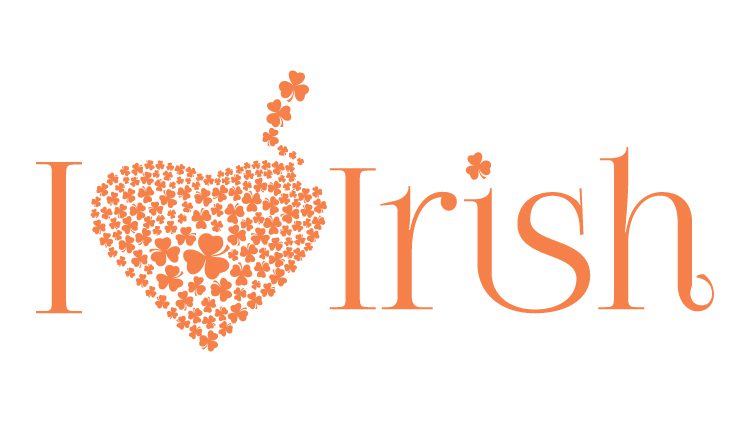
What is an endangered language?
An endangered language is a language that is at risk of falling out of use due to a declining number of speakers. When a language loses its native or primary speakers, it can no longer be transmitted to younger generations, leading to its eventual extinction.
The Irish language, also known as Gaelic, is one such language that is currently considered endangered. It has a long history dating back to the 17th and 18th centuries and is one of six Celtic languages. Irish was once the dominant language in Ireland, but its use declined after English became the national language during British rule.
Today, only a small percentage of the population in Ireland speaks Irish as their primary language. Most Irish speakers are native speakers living in remote, rural areas. Scottish Gaelic is a similar language that has experienced similar declines. The majority of the population in Ireland speaks English, which has become the major language of business, education, and government.
Despite the language’s decline, there are ongoing efforts to revitalize and preserve the Irish. Initiatives like language learning platforms and government-funded language immersion schools are working to encourage more Irish speakers and create a sustainable future for the indigenous language.
The History of the Irish Language
The Irish language, also known as Gaelic, is a native language of Ireland. It is a Celtic language that dates back to the 4th century and was the dominant language on the island until the 17th century. During this time, English became the ruling class's language, leading to a decline in the use of the Irish language.
The Irish language survived despite being declared a dead language in the 19th century. In the early 20th century, a language revival movement began, with the establishment of language schools, the publication of literature and media in Irish, and the incorporation of Irish into public life. Today, Irish is recognized as the first official language of the Republic of Ireland, and the Irish Language Act of 2003 has promoted and protected the language.
However, the use of Irish is still in decline. Many speakers of the language are concentrated in the Gaeltacht regions, and the use of Irish in daily life has been greatly reduced in urban areas. Despite these challenges, efforts to promote and revitalize the language continue, with initiatives such as language immersion programs and establishing bilingual schools.
Current status of the Irish language
The Irish language's current status is a concern for language preservationists. Irish, also known as Gaelic, is one of the official languages of Ireland, along with English. However, it is important to note that Irish is considered an endangered language.
According to recent statistics, only a small percentage of the Irish can speak the language fluently. Most Irish speakers are concentrated in the Gaeltacht regions, where the language is traditionally spoken. Outside of these regions, English dominates as the primary language of communication.
The decline of the Irish language can be attributed to several factors. Historically, the British colonization of Ireland led to the suppression and marginalization of the Irish, with English becoming the dominant language. This trend continued as English became more widespread and important for education, business, and social interactions.
Despite these challenges, there have been efforts to revitalize and preserve the Irish language. Bilingual education programs, immersion schools, and language initiatives have been established to encourage Irish language learning and usage. The Irish government has also tried to promote the language through legislation and funding.
While the current status of the Irish language is concerning, there is hope for its future. Continued efforts to revitalize and preserve the tongue may help prevent it from becoming extinct.
Factors contributing to the decline of Irish
Several factors have contributed to the decline of the Irish language, also known as Gaelic. One of the main factors is the influence of the English language, which was introduced to Ireland during British colonization. English became the language of power, education, and social status, while Irish was associated with poverty and backwardness. As a result, many Irish people felt compelled to abandon their native language in favor of English to gain access to better opportunities.
Another contributing factor is the decline in intergenerational transmission of Irish. In the past, Irish was primarily spoken in rural Gaeltacht areas, passed down from generation to generation within families. However, as people migrated to urban areas for employment and education, language transmission became less prevalent. This shift led to a decline in the number of native Irish speakers, further jeopardizing the vitality of the language.
Furthermore, the lack of governmental support and funding for the Irish language has also affected its decline. Despite efforts to promote bilingualism and support Irish-medium education, there is a perception among some that the government prioritizes English over Irish. This lack of support can deter individuals from learning and using Irish, further contributing to its endangered status.
Overall, the decline of the Irish language can be attributed to a combination of historical, social, and political factors, including the influence of English, the reduction in intergenerational transmission, and the lack of governmental support. However, despite these challenges, ongoing efforts to revitalize and preserve the Irish will be discussed in the next section.
Efforts to revitalize and preserve Irish
Despite the challenges facing the Irish language, there have been concerted efforts to revitalize and preserve it in recent years. In 2003, the Irish government launched the 20-Year Strategy for the Irish Language, which aims to increase the number of daily speakers of Irish to 250,000 by 2030. The strategy includes increasing funding for Irish-medium education, promoting the language in the public sphere, and supporting Irish-speaking communities.
Numerous organizations and initiatives are working to promote the Gaelic language, such as Conradh na Gaeilge (The Gaelic League), which advocates for the use of Irish in everyday life and offers language courses and resources. In addition, there are Gaeltacht regions where the language is still spoken as the primary means of communication and immersion programs that allow people to learn Irish in a full-immersion environment.
These efforts are not without their challenges, however. Funding for Irish language programs can be limited, and the availability of resources and opportunities for Irish speakers outside of Gaeltacht regions can be determined. Nonetheless, the passion and dedication of those working to preserve the Irish language suggest hope for its future.
Frequently Asked Questions
While the Irish language, also known as Irish Gaelic or Gaeilge, has faced challenges, it is not currently considered an endangered language. Efforts have been made to revitalize and promote its use, and there are still communities where Irish is the primary language.
The number of Irish speakers varies depending on the region. In the Republic of Ireland, it is estimated that around 73,000 people speak Irish daily, with approximately 1.8 million having some level of proficiency. In Northern Ireland, there is also a smaller but significant Irish-speaking community.
There are efforts to protect and promote the Irish language. The Irish government, educational institutions, cultural organizations, and communities actively support Irish language initiatives, including education, media, and cultural events.
The Irish government has implemented policies to support the Irish language, including establishing official language status, funding Irish-medium education, and creating public Irish language broadcasting channels, such as TG4.
The Irish language is taught in schools in both the Republic of Ireland and Northern Ireland. Irish-medium education schools, known as Gaelscoileanna, provide instruction primarily through Irish. All students in Ireland also study Irish as a mandatory subject in the national curriculum.
https://www.universal-translation-services.com/is-irish-an-endangered-language/


Comments
Post a Comment